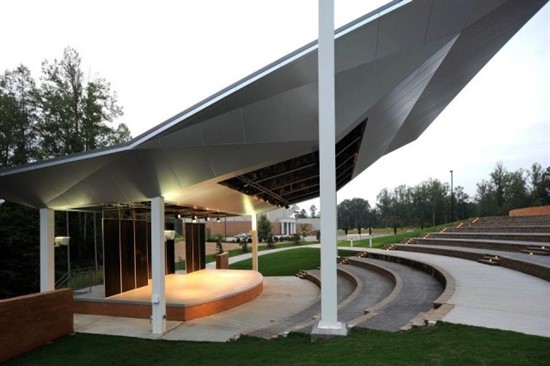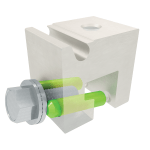Contractor operates safely and profitably building many happy customers
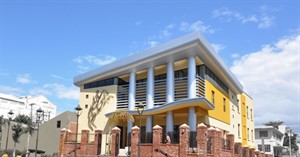 Kistler McDougall Corp., Woodstock, Ga., has been a specialty contractor and an innovative leader in the metal cladding construction industry for more than 30 years. In 1978, its founder Herman Kistler began selling and marketing aluminum composite material (ACM) for Consolidated Aluminum Corp. In 1984, Herman Kistler joined forces with Wylie and John McDougall of the John W. McDougall Co., Nashville, Tenn., to form Kistler McDougall Corp. Kistler McDougall remains as a partner to John W. McDougall, as well as to several additional companies (EWS, EWS Midwest, EWS Texas and Efi) within the McDougall Group of companies which seek to provide total enclosure products and services across the country.
Kistler McDougall Corp., Woodstock, Ga., has been a specialty contractor and an innovative leader in the metal cladding construction industry for more than 30 years. In 1978, its founder Herman Kistler began selling and marketing aluminum composite material (ACM) for Consolidated Aluminum Corp. In 1984, Herman Kistler joined forces with Wylie and John McDougall of the John W. McDougall Co., Nashville, Tenn., to form Kistler McDougall Corp. Kistler McDougall remains as a partner to John W. McDougall, as well as to several additional companies (EWS, EWS Midwest, EWS Texas and Efi) within the McDougall Group of companies which seek to provide total enclosure products and services across the country.
Over time, Kistler McDougall management saw ACM become one of the most specified exterior cladding products in modern construction history, and also saw the company grow and prosper. Bhrett Kistler, president of Kistler McDougall, currently oversees the company’s day-to-day operations. Meanwhile, Kurt Kistler, vice president, manages the fenestration and daylighting division of the company. “Metal claddings are excellent products and we enjoy working with them,” Bhrett Kistler says. “It’s not just stacking blocks or welding one piece to another. ACM can have rounded edges; it can have softer edges, or sharp 90-degree corners and bends. For 25 years the color palette was limited; only a handful of colors-variations on gray, white and bronze-were typically used. Now the sky is the limit on finishes and any custom color is available. You can integrate dissimilar materials with dissimilar patterns, and dissimilar systems with one another. You can create interesting design aesthetics that 10 years ago were virtually impossible.”
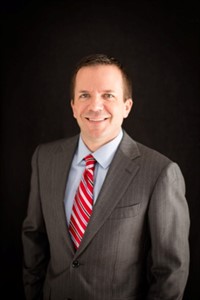 |
| Bhrett Kistler |
Diversification Success
One secret to Kistler McDougall’s success has been in its product/service diversification. The company experienced a long period when metals were designed and utilized in a mono-product manner with one product being used extensively for nearly the entire exterior building façade. But, over the last 10 to 15 years the company has witnessed an increasingly varied design style throughout the industry with multiple products, finishes and textures being used on the same building façade. While its start was in the exterior ACM market, Kistler McDougall can now fabricate and install almost any architectural cladding that goes on the exterior of a building.
“The most important step we made to grow our revenues in the last 15 years was through the diversification of our product line between multiple metal and non-metal cladding products and systems,” Bhrett Kistler says. “We seek to be a source for all of the cladding elements on a project, whether that need happens to be for ACM, insulated metal panels, single-skin metal panels, terra cotta rainscreen façades, fiber cement panels or even phenolic panels.” Additionally, seeing a significant need for more collaboration with architects and owners in managing appropriate daylighting levels within a designed space, the company even started distributing Manchester, N.H.-based Kalwall Translucent Panel Systems. To further add to its daylighting expertise, Kistler McDougall then added Vista, Calif.-based Solatube International Daylighting Systems.
Market changes were a driver for Kistler McDougall’s push for diversification. Bhrett Kistler says in the early 1980s, exclusive deals were the norm. “If you bought Alucobond in the Southeast then, you had to buy it from Kistler McDougall,” he says. But that changed as more and more suppliers entered the market. “In the 1990s it became a wide-open game and that really shook things up,” he adds. “You could supply anybody and everybody because
[suppliers] made a decision to expand their distribution and essentially sell to everybody. This only served to drive prices down, which is either good or bad, depending on who you ask. It was good for the manufacturers’ sales figures, but it drove the margins down.”
Realizing ACMs were moving toward something of a commodity and growing in usage, Kistler McDougall decided it didn’t want “to put all our eggs in one basket.” It actively sought to diversify across multiple products in the metal panel industry and also find other products that were associated with metal panels or tied in with metal panels. “The Kalwall line is a façade product that integrates seamlessly with other cladding and roofing systems,” Bhrett Kistler says. “Solatube was a natural fit because it offered a different method of daylighting interior spaces.”
Installation Success
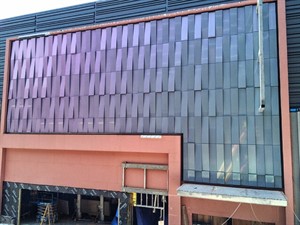 Installation quality has been a big part of Kistler McDougall’s success. “There are best practices and product know-how that you have to figure out to know how to do it correctly and profitably,” Kistler says. “You can’t
Installation quality has been a big part of Kistler McDougall’s success. “There are best practices and product know-how that you have to figure out to know how to do it correctly and profitably,” Kistler says. “You can’t
[install] all types of metal panels the same because there are small, nuanced items and issues with each of them that if you don’t learn and address early on could become a problem later on.”
Kistler cites field measuring a building prior to installing insulated metal panels (IMPs) to ensure it is square and plumb, and ensuring the distances are where they are supposed to be for the IMPs attachment tolerances. These tolerances are limited by the manufacturer. However, “Typically with IMP, nobody field measures before production because of the lead time, but it is a real key to do so prior to installation,” he says. “Without field measuring, you can find yourself in a bind late in the game. If there are problems, you have to point them out to the general contractor as soon as possible so they can correct them. IMP manufacturers will typically only let you shim a wall out a certain amount before doing so could possibly nullify the warranty.”
Kistler McDougall has improved its installation by taking its older systems and updating them via testing to meet newer and evolving codes. Fifteen years ago, Kistler says the only big test for ACM systems in the southeast was the Dade County Notice of Acceptance used for hurricane impact. Now, there are many others: AAMA 508, AAMA 509, NFPA 285, Florida Product Approval, etc. “Working with the designers and contractors to find a
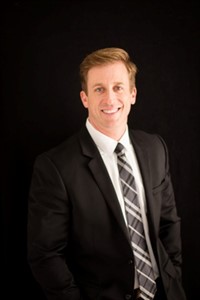 |
| Kurt Kistler |
system that achieves the design aesthetic and meets the local, state and federal codes is now a much more difficult task,” he says. “When you consider it, we only have two primary systems: a wet joint caulk system and rainscreen joint systems. The wet joint has continued more or less unchanged; the rainscreen-type continues to change as the codes change.”
Kistler McDougall’s integrated system approach has helped it remain profitable. “We are not selling an ACM product, as much as we are selling one of our proprietary systems which may utilize an ACM product,” Kistler says. “Typically a system revolves around one product. Now, figuring out how to integrate that system with another system so the building meets the continuous insulation requirements and marrying these systems so they meet code requirements is value added and why a customer would potentially seek our company. We want the final product to be right and the end user to get a product that performs as it was designed. We do quite a bit of negotiated work because our customers understand that our goal is to help them provide the proper products, within the most advanced and tested systems, and then to do it all safely, within budget and on-time.” Over 30 years, this approach has produced for Kistler McDougall many successful projects and many happy customers.
_________________________________________________________________________________________
Sidebar: Company Profile
Year Founded: 1984
Location: Woodstock, Ga.
Geographic Areas of Service: Southeastern U.S. and the Caribbean
Services Offered: Full-service fabricator and installer of engineered architectural metal and exterior envelope systems
Number of Employees: 30+ employees
ACM Square Footage Installed:
2016 (projected): 315,000 square feet
2015: 273,000 square feet
2014: 255,000 square feet
Revenue:
2016 (projected): $15 million
2015: $8.5 million
2014: $9.1 million
Management Team:
Bhrett Kistler, President
Kurt Kistler, Vice President
